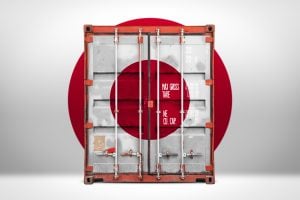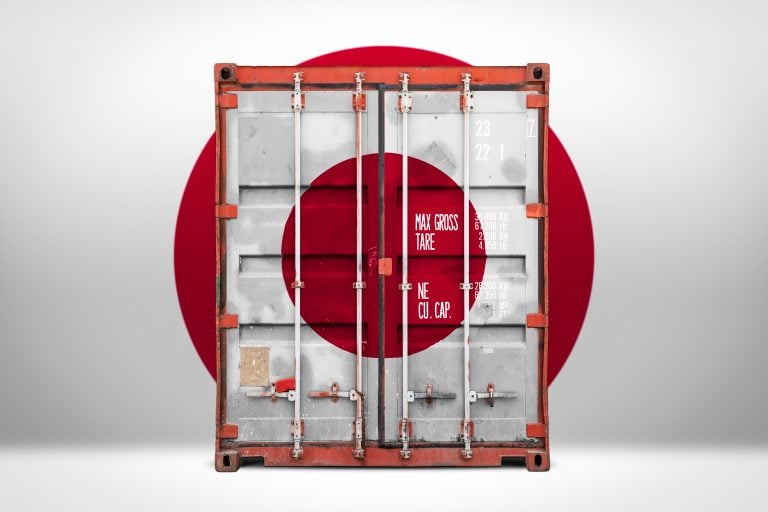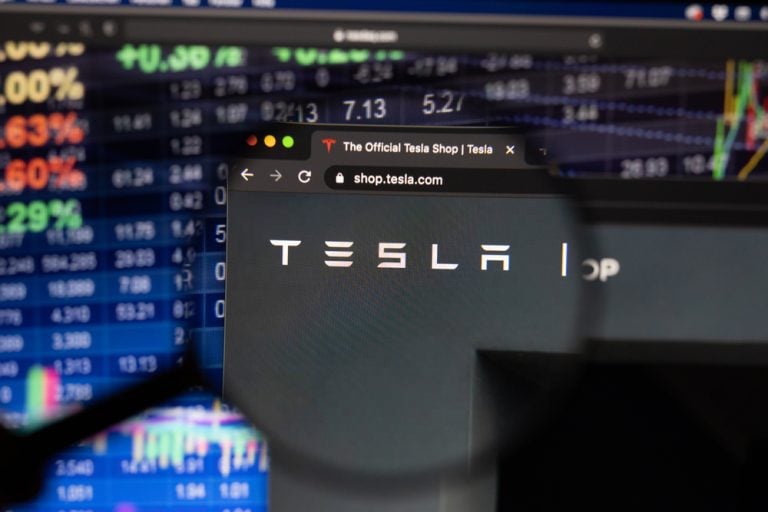10 ASX explorers and miners rose above $500m market cap in 2023
At the same time 17 dropped under that mark, highlighting the fickle nature of the 2023 market
2023 Monsters: Azure, Wildcat, Lotus, WA1, Westgold, Chrysos, Latin, Resolute, Meteoric, Spartan
The ASX has been a cold and unwelcoming place for small cap resources stocks in 2023, with tempestuous global economic seas, rising interest rates and volatile commodity prices sending investors flocking for the safety of cash and blue chips.
Yet even in the darkest of times there are — often spectacular — gains to be found at the small end of the mining sector and this year was no exception.
From booming lithium explorers drawing the longing gaze of every billionaire under the burning Pilbara sun to gold miners hitting their straps, there were 10 companies who rerated from under a $500 million market cap to claim Stockhead’s esteemed title of Monster of Rock.
Of those companies three were focused on lithium — two in the Pilbara and one in Brazil — with three in gold, one in rare earths, one in niobium and one in assay technology.
On top of that, a handful of companies above and below that mark delivered exceptional gains for holders in 2023.
At the same time 17 dropped under that mark, highlighting the fickle nature of the 2023 market, heavily influenced by falling prices in battery metals and coal as graphite, nickel and energy companies struggled.
But we really want to look at who managed to earn the mythical Monstar rerate in 2023 and just how they were able to do it.
Without further ado, here is 2023’s class of new monsters.
AZURE MINERALS (ASX:AZS)
MARKET CAP: $1.72b
% CHANGE: +1600%
It’s a tale as old as time itself, if time started in 2022 and all you’ve ever known is investing in lithium stocks.
Junior goes drilling for nickel, copper and gold. Finds pegmatite. Mania ensues.
It’s counter-intuitive that Azure and fellow 2023 success story Wildcat Resources have been absolutely flying at a time when lithium spodumene prices have fallen into a deep and despairing funk, tripping from over US$8000/t to US$1100/t like a burglar falling comically down the stairs at Kevin McCallister’s house.
But underpinning it all is the idea that the big dogs of the mining industry — those who realised China’s thirst for steel would make iron ore the key to the castle early this century — can see the long term utility in controlling WA’s world-leading hard rock lithium assets.
Tony Rovira’s Azure came into 2023 as a small cap with, like many other lithium hunters, a nickel deposit at its 60-40 owned Andover JV with legendary prospector Mark Creasy and a few high grade rock chips.
But on the sidelines its geologists were quietly confident they were onto something real, and rock lickers with lithium experience were beginning to look longingly at the geology Azure had at its disposal.
In January Chile’s SQM spent what looked like a hefty price at the time of $20m to garner a 19.99% stake in Azure at 25.64c a share.
Once a massive lithium discovery was made in June — 105.0m at 1.26% Li20 from 256m deep — that immediately looked like money for jam.
By Diggers and Dealers in August, resource analysts were touting the potential of a lithium deposit of at least 60Mt from the drilling released to the market. A JORC exploration target suggested Azure could be sitting on as much as 100-240Mt at 1-1.5% Li2O. World Class if true.
That number is not due until next year. But fingers are getting itchy and SQM tried to move fast to get its hands on all of Azure, knocked back at $2.31.
It re-emerged with a $3.52 a share bid that was accepted … but ran into immediate headwinds as Gina Rinehart and Chris Ellison offered investors an early and immensely profitable exit by buying up shares above the bid price.
Even as lithium prices fell on major oversupply worries in China, Mineral Resources (ASX:MIN) boss Ellison let investors behind the curtain on the big end of town’s plans to place their foot on a sector they see booming again in the late 2020s.
It informed the desires of the giants to make the Azure takeover stick. Most recently Rinehart returned in partnership with SQM for a joint $3.70 bid (valuing the company at $1.7b), critically with the support not only of the explorer’s board, but also future JV partner Mark Creasy.
READ: Ten-Bagger: How do you pick a winner like Azure?
Azure Minerals (ASX:AZS) share price today
WILDCAT RESOURCES (ASX:WC8)
MARKET CAP: $825m
% CHANGE: 3375%
No company captured the insanity of 2023 quite like Wildcat Resources.
As lithium prices hit the skids Wildcat did what was, with hindsight, incredibly predictable.
They’d picked up the Tabba Tabba project, an old tantalum mine once held by lithium gods Pilbara Minerals (ASX:PLS) before their perfectly timed Pilgangoora discovery, at an effectively nominal price.
It came from Global Advanced Metals, an up for sale division of Resource Capital Funds, which has made its moolah by collecting cheap tantalum rights from lithium miners, having sold projects like Wodgina — now one of the largest lithium mines in the world.
Historically, mining lithium at old tantalum mines has been a great idea. Greenbushes, the world’s biggest and highest grade lithium project, was previously a tantalum and tin mine where the lithium used to go to the trash heap.
Bald Hill near Kambalda and Wodgina were the same. First you have to find the lithium of course, something Wildcat did on September 18, cracking the bottle open with a hit of 85m at 1.1% Li2O. More was to follow.
Initially drawing attention on speculation Fortescue had made a lithium discovery next door, the nearology saw the stock, trading at just 2c as 2022 closed, hit a high of 92c with MinRes piling in to take a 19.85% stake after a block trade that saw Ellison and Co. acquire GAM’s Wildcat stake at 85c a pop.
It’s now back down around 70c, but the rerate has been no less spectacular for Wildcat’s turnaround crew of Sam Ekins, Jeff Elliott, Matty Banks and Alex Hewlett.
Banks previously recapped Spectrum Metals, making one of the best gold discoveries in years before its sale along with the high grade Penny gold mine to Ramelius Resources (ASX:RMS) at a 52% premium for $208m.
Can Wildcat nab a similar result after rattling the tin for an incredible $100m in November, or will the Azure takeover be the peak of the froth? Time will tell.
Wildcat Resources (ASX:WC8) share price today
LOTUS RESOURCES (ASX:LOT)
MARKET CAP: $551m
% CHANGE: 72%
There is little surprise to see a uranium company in this list, given the staggering run the spot price of yellowcake has been on this year, a roughly 90% rise to US$91.50/lb, levels not seen since before the Fukushima nuclear meltdown in 2011.
Those levels may well be high enough to spark investment in new supply, with the decade high contracting levels of utilities leaving uranium producers bullish that this year’s rally has an air of reality to it.
Boss Energy (ASX:BOE), which made our rerate list a couple years ago, is up a tidy 100%+ again to $1.66b as its Honeymoon mine teeters on the edge of entering production.
Fellow near-term producer Paladin Energy (ASX:PDN) is also up ~47%, with a market cap of almost $3b, while John Borshoff’s Deep Yellow (ASX:DYL) is trading at around $800m.
Joining that cohort this year was Lotus Resources, thanks to a well-timed acquisition of fellow uranium play A-Cap Energy.
Originally announced in July, before the surge really came for uranium prices, the deal combined Lotus’ advanced Kayelekera project in Malawi — a restart of an old Paladin mine which would cost US$88m to develop and produce 2.4Mlbpa of U3O8 over a 10 year mine life — with A-Cap’s larger but earlier stage Lethlekane project in Botswana.
Lotus offered 1 share in the scheme of arrangement for every 3.54 A-Cap shares on its register, giving A-Cap holders around 21% of the combined $312m entity.
And while much of this year has been tied up with the completion and bedding down of that merger, the increasing interest in nuclear energy globally as a solution to cut down on carbon emissions from electricity generation and an apparent shortage emerging in utility supplies has combined to make it a very successful one so far.
READ: Monsters of Rock: Another significant ASX uranium merger as yellowcake interest goes nuclear
Lotus Resources (ASX:LOT) share price today
WA1 RESOURCES (ASX:WA1)
MARKET CAP: $540m
% CHANGE: 694%
WA1 Resources shot into this list in the final month of 2023 as a major upgrade from Canaccord Genuity, lifting its price target on the niobium hopeful from $11.50 to $17.50, triggered a manic session of buying last week.
All eyes are on the maiden resource for its Luni discovery, which is due around the second quarter of next year.
What is that? It’s a carbonatite hosted niobium find in the WA outback, located along the border of WA and the NT in frontier country known as West Arunta.
It’s piqued the interest of analysts and investors for the discoveries size and grade. Metallurgy aside, drilling so far suggests that it could be significant enough to threaten a cozy virtual monopoly held by a single mine in Brazil that has provided the bulk of the world’s supply of the critical mineral for four decades.
CG’s analysts Tim Hoff and Michael D’Adamo last week lifted their modelled high grade resource at Luni 28% from 32Mt at 2.25% Nb2O5 to 41Mt at 2.33% Nb2O5, inside a broader resource model of 154Mt at 1.19% Nb2O5.
By way of comparison (and noting it is in no way a JORC compliant estimate) Companhia Brasileira de Metalurgia e Mineracao is the world’s primary supplier of niobium products from a single mine in Brazil’s Araxa State, where open pits are mined at a world-leading grade of 2.5% Nb2O5.
All up around 99% of global niobium supply comes from just three mines — the aforementioned CBMM mine, with another 11% coming from a mine in Brazil owned by China Molybdenum. Another 8% is produced at the Niobec mine in Quebec.
On the ASX, Lynas (ASX:LYC) boasts niobium within in Mt Weld mine in Laverton, but it is merely a by-product there with the bulk of the company’s revenue coming from the sale of magnet metals neodymium and praseodymium.
But demand is global. Around 90% of the 100,000tpa Nb market comes from the use of ferroniobium as an alloy to improve the mechanical properties of steel, while it has also been used as an additive in lithium-ion batteries to reduce charge times.
WA1’s emergence as one of the ASX’s hottest exploration stocks sparked a renewed focus on the West Arunta region, where Rio Tinto is also a major landholder.
Neighbour Encounter Resources (ASX:ENR) is also up 75% YTD, while CGN Resources (ASX:CGR) was one of the few resources IPO to get away in 2023.
WA1 Resources (ASX:WA1) share price today
WESTGOLD RESOURCES (ASX:WGX)
MARKET CAP: $1.04b
% Change: 144%
One of the companies which fell below the $500 million barrier last year after dumping a short-lived dividend, Westgold roared back to market relevance under the direction of MD Wayne Bramwell in 2023.
The Murchison focused gold miner, which produces in the order of 250,000ozpa of bullion from historic assets in and around the WA gold rush towns of Cue and Meekatharra, approved the redevelopment of the historic Great Fingall mine and announced an expansion that will keep its flagship Big Bell underground mine in operation for 16 years.
And some super high grades from drilling at its Starlight underground mine captured the attention of the market earlier this month.
But the big triumph for Westgold this year has been its improved cashflows.
WGX swung from a $111m loss to a $10m profit in FY23, and announced a formal dividend policy to pay out a maximum 30% of NPAT after clearing its hedge book to capture strong gold prices, which have traded above $3000/oz for much of 2023.
That gold price, by the way, rose to US$2069/oz according to the LBMA, on Wednesday, staggeringly close to the all time high of US$2075/oz.
At current exchange rates that’s around $3022/oz, promising healthy profits if Westgold can keep all in sustaining costs within its guided range of $1800-2000/oz (63,104oz at $1935/oz in the September quarter).
One missing piece has been M&A, with Westgold gazumped by regional rival Ramelius Resources (ASX:RMS) in its attempts to ensnare Musgrave Minerals.
It now has over $300m of liquidity at its disposal to chase a big fish, with $217m of cash and bullion in the bank as of September 30 and a further $100m ready to draw in a revolving credit facility signed with ING and Societe Generale in November.
READ: Davids and Goliaths: Is this the year the gold sector’s mid-tier wins?
Westgold Resources (ASX:WGX) share price today
CHRYSOS CORPORATION (ASX:C79)
MARKET CAP: $616m
% CHANGE: 176%
When RFC Ambrian backed Chrysos Corporation tanked on debut after the mining PE firm’s $183.5m IPO of its next generation lab assay provider, it seemed like the writing was on the wall for the bull market that had led to IPOs of that magnitude.
But this year the mining technology disrupter has rebounded strongly, surging well beyond its $6.50 IPO price even after a $75m placement in November.
Chrysos’ CSIRO-derived photonassay technology — rolled out in a number of labs and minesites in partnership with assay providers and gold producers — is non-destructive and promises to complete assays with far lower CO2 emissions than the centuries-old fire assay method.
In its first full year listed on the ASX, C79 saw revenues lift 89% to $26.8m, meeting a target set in the company’s prospectus, with EBITDA up 70% to $3.5m, swinging from a net loss of after tax of $3.938m in FY22 to $443,000 in FY23.
Chrysos remains in growth mode, raising $65m in debt from Commonwealth Bank last week to take its debt available to $95m, lifting its liquidity to deploy more of the firm’s PhotonAssay units.
READ: IPO Watch: The biggest resources listing of 2022 so far is not a miner – say hello to Chrysos
Chrysos Corporation (ASX:C79) share price today
LATIN RESOURCES (ASX:LRS)
MARKET CAP: $740m
% Change: 165%
Lower lithium prices curbed a rally that sent Latin Resources shares running as high as 42c a share in August.
But it has still been a strong performer in 2023, building off the release late last year of the maiden resource at the Colina deposit at its Salinas project in Brazil.
It has also benefited from growing interest in the Brazilian spodumene industry, which has emerged as the largest hard rock lithium producing domain outside WA and Africa.
That was headlined by the opening of TSX-listed Sigma Lithium’s 270,000tpa Grota do Cirilo mine earlier this year, which delivered over US$35m of profit in its first operating quarter in September.
Sigma has also, like the WA lithium names, become a massive target for acquirers hoping to cement a foothold in a commodity viewed as a window to the future of transport.
Brazilian media have suggested Volkswagen and the world’s biggest battery maker CATL are among the final contenders for the mine.
That will place a microscope on other deposits in the Brazil like Latin’s Colina, which now boasts a mineral resource of 63.5Mt at 1.3% Li2O, around two-thirds of that indicated and measured.
Including the lower grade Fog’s Block, Latin is sitting on over 70Mt at a grade of 1.27% Li2O, competitive with operations in WA.
A DFS is due for completion in mid 2024 after a preliminary economic assessment that suggested the mine could produce 405,000tpa of 5.5% Li2O spodumene concentrate a year and 123,000tpa of 3% Li2O concentrate at an all in sustaining cost of US$536/t with phase 1 capex of US$253m targeting first production in 2026.
A second stage costing US$55m would then increase life of mine production to 525,000tpa of SC5.5 and 159,000tpa of SC3.
Prices have since run below long run prices used in the September study of US$1699/t ($2427) SC5.5 and US$927/t ($1324) SC3, though the larger size of the resource could yet boost the scale of the final offering.
READ: Eye on Lithium: A sniff of Sigma-like success has ASX hard rock explorers moving to Brazil
Latin Resources (ASX:LRS) share price today
RESOLUTE MINING (ASX:RSG)
MARKET CAP: $980m
% Change: 133%
While the African discount and investor fatigue cast a pall over West African market darlings like West African Resources (ASX:WAF) and Perseus Mining (ASX:PRU) this year, a serial underperformer in dual London and ASX listed African gold miner Resolute finally enjoyed a change of fortunes.
RSG swung from a a US$24.1m loss after tax to a US$87.7m profit in the first half of 2023, producing 176,629oz at an all in sustaining cost of US$1469/oz.
It held its gains despite a weak third quarter, when gold output fell from 84,372oz to 74,056oz largely due to issues at its Syama oxide operation.
Though it kept costs in check, maintaining an AISC gold margin of over US$400/oz.
But this will be one to watch for pessimists as well. Much of the air in the balloon is on expectations.
The Terry Hollohan led miner set new guidance over 1-1.1Moz from 2024 to 2026 in October after completed a study on a phase I expansion of its Syama sulphide mine, which will produce more than 260,000ozpa from 2026.
Though 2023 output was revised down at the time from 350,000oz to 330,000-340,000oz at US$1480/oz, it has promised systemically lower all in sustaining costs of US$1175-1275/oz by 2026.
RSG also expects its the profitability of its Mako mine to improve after a cut back this year which will provide access to higher grade ore in excess of 2g/t, producing 130,000-140,000oz in 2024 and 2025 at costs falling from US$1450/oz to US$1100-1200/oz.
READ: Monsters of Rock: Is this downtrodden African gold miner finally coming good?
Resolute Mining (ASX:RSG) share price today
METEORIC RESOURCES (ASX:MEI)
MARKET CAP: $506m
% Change: 336%
As late as November 2022 you could have found a unit of Meteoric Resources stock sitting at the bottom of your record shop bargain bin for just 1c.
No chance now, after the Tolga Kumova-backed Brazilian explorer uncovered one of the world’s highest grade ionic clay rare earths deposits in historic drilling at a family owned mine in Brazil’s Minas Gerais state.
That family business had largely been mining clay in the area for 112 years to sell building bricks and roof tiles, then delivering refractory products for furnaces and kilns in industries like steel, aluminium, industrial minerals, glass and ceramics production.
Now Meteoric thinks the same clays could be used to add to the western world’s arsenal in a bid to supply rare earths used in EV motors and wind turbines.
MEI began to rerate as soon as it acquired Caldeira and reported its amenability to ionic adsorption processing in December last year.
But it has rerated again since the release of a maiden resource in May declared as the world’s highest grade ionic adsorption clay REE deposit, containing 409Mt at 2626ppm TREO at a 1000ppm cut off.
Around 24% of that basket are magnet rare earths, with drilling only completed down to 6.9m at the time and every hole finishing not just in mineralisation, but at mineralisation above 1000ppm.
Drilling since has found high grade pockets beneath historic drilling, extending as far in some places a 56m.
Ausenco was awarded a contract in October to deliver a scoping study on the Caldeira project, expected to be completed by the first quarter of next year.
READ: Barry FitzGerald: Here’s why Meteoric’s REE moonshot is only just firing up
Meteoric Resources (ASX:MEI) share price today
SPARTAN RESOURCES (ASX:SPR)
MARKET CAP: $505m
% Change: 382%
Without a doubt the turnaround story of 2023, Simon Lawson’s Spartan Resources emerged from the rotting corpse of Gascoyne Resources after his junior Firefly Resources held the struggling gold miner to a deal to merge amid late attention from Westgold Resources.
Still known as Gascoyne until early this year, its low grade Dalgaranga mine was put on ice and $50m raised on February 27 to recapitalise the struggling miner turned explorer. Then capped at $87m, the company hit the $500m milestone yesterday, on the second last trading day of 2023.
It proved to be the reset investors needed. The high grade Never Never discovery, made incredibly in the shadow of the Dalgaranga mill, emerged as the main focus after a 183% resource upgrade to 303,000oz in January.
By the end of the year, it had expanded to 952,900oz at 5.74g/t, making up well over half the ounces in the Dalgaranga complex.
“To be able to post a high-grade Resource for the Never Never discovery of just under 1 million ounces at an average grade of 5.74g/t less than a year after emerging from a 10c recapitalisation is an incredible outcome and a remarkable story – one of which we are justifiably proud,” said Lawson, a former Northern Star geo, back on December 14.
After raising $50m in the recap at 10c, Spartan topped up for $25m at 40c in November, with almost $30m to be spent drilling out Never Never, chasing look-a-like targets and completing feasibility studies.
Never Never has not only lifted Spartan’s prospects of returning to production, but also heightened its takeover potential, with regional players like Westgold, Ramelius and Silver Lake Resources (ASX:SLR) hungry for new ounces.
Spartan Resources (ASX:SPR) share price today
At Stockhead we tell it like it is. While Azure Minerals, Latin Resources and Spartan Resources were advertisers at the time of writing, they did not sponsor this article.
The post Massive gains saw these 10 ASX miners become Monsters of Rock in 2023 appeared first on Stockhead.




















+ There are no comments
Add yours